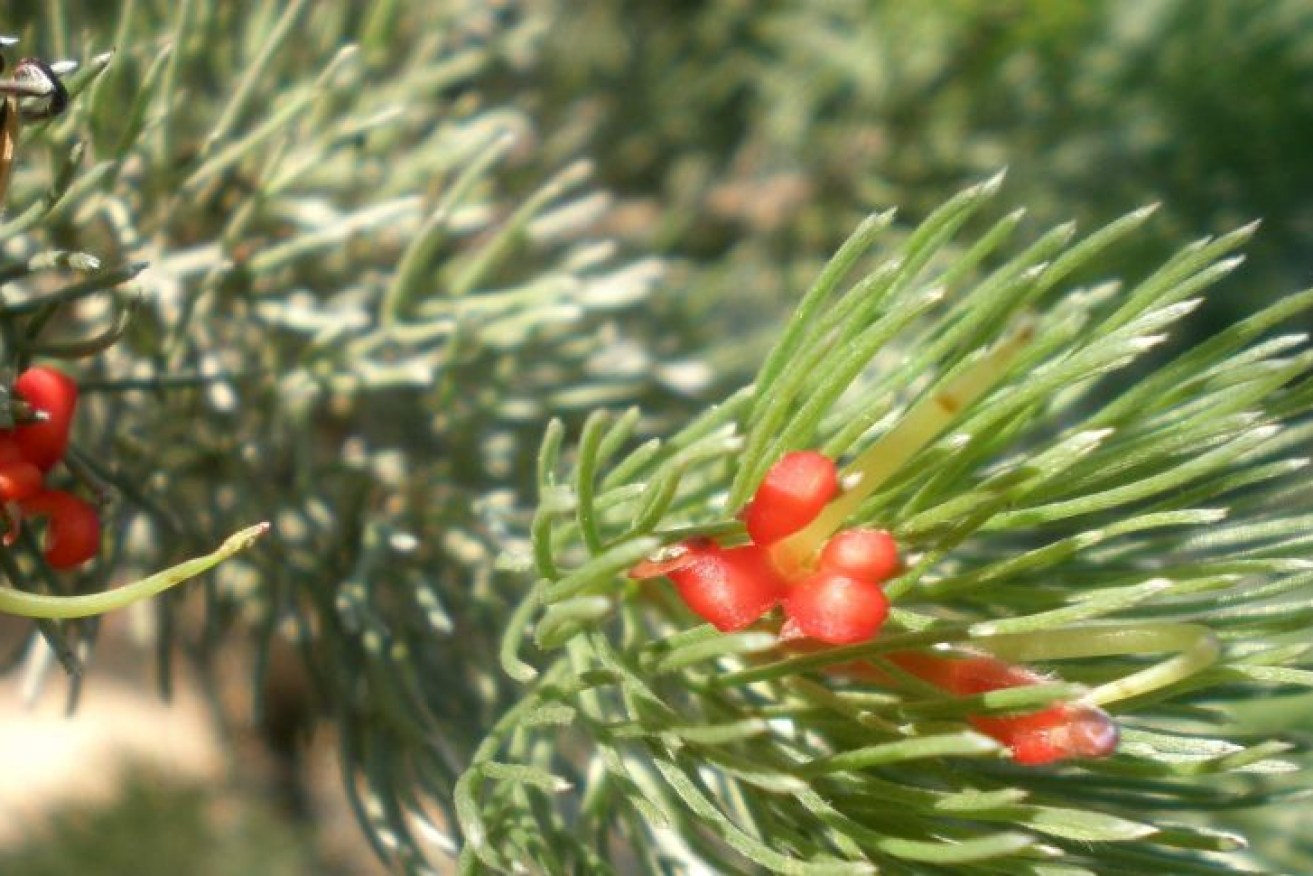The native trees, bushes and flowers that make a very Australian Christmas

The Albany woolly bush makes a good potted native Christmas tree. Photo: Wikiimedia/Consultaplantas)
Australians are spoilt for choice when it comes to native plants to brighten up the festive season, with our very own Christmas trees, bushes, mistletoe and holly.
Using pine trees and mistletoe to celebrate Christmas is a tradition that originated in the northern hemisphere, where they’re among the few plants with leaves in winter.
“Christmas time in Europe is pretty bleak,” says Murray Fagg of the Australian National Botanic Gardens.
The antipodean summer, by contrast, is quite different.
“When you come to Australia everything is green at Christmas time.”
And some natives have very pretty flowers that come out in December.
But rather than go out illegally collecting things from the wild, admire native plants in place or go to a nursery and try growing them yourself.
Christmas bushes

The NSW Christmas Bush (Ceratopetalum gummiferum) has a long history of use at Christmas time. Photo. Fagg/APII
Early European settlers around Sydney collected a shrub with beautiful red blooms they dubbed ‘Christmas bush’.
Masses of it were rowed by boat to town for sale during the festive season, Mr Fagg said.
Surprisingly, the flowers of this plant, officially known as Ceratopetalum gummiferum, are actually white and come out earlier in the year during spring.
The red parts are actually swollen ‘calyces’, parts of the flower that surround the fruit after the flower petals drop off, Mr Fagg says.

Depiction of a boatload of Christmas Bush (Ceratopetalum gummiferum) from the 1800s. Photo: Sydney Mail, December 23, 1882
But the term Christmas bush can mean different things in different parts of Australia.
For example the Victorian Christmas bush is the shrubby Prostanthera lasianthos, which has gorgeous white, pink or mauve flowers.

The Victorian Christmas Bush Prostanthera lasianthos. Photo: Wikimedia/Geoff Derrin
In South Australia and Tasmania the thorny white-flowered Bursaria spinosa has earned the title of Christmas bush.

Bursaria spinosa: prickly but beautiful. Photo: M. Fagg/APII
Western Australian Christmas Tree
Another native that flowers in December is the Nuytsia floribunda or Western Australian Christmas tree.
Its marvellous yellow and orange blooms stand out when you fly over the land.
This plant dates back 40 million years and is very special to the Noongar people from the south-west of the state who know it as the Moodjar tree.

The blooms of this icon of south-western Australia, Nuytsia floribunda, can be seen clearly from the air. Photo: Quentin Knight
For most of the year they will not go near it because they believe the spirits of their ancestors rest in its branches.
But traditionally, during this time of year they gather the flowers and ferment them into a festive brew, which reportedly tastes a bit like flat soda with a bit of honey in it.
Nuytsia floribunda is a parasite that feeds off other plants below ground.
Sadly it is very sensitive to disturbance of its roots and seems to be on the decline.
Other parasitic plants that sink their roots into host trees above ground are commonly called mistletoes.
And some of these have lovely red flowers.
Potted native Christmas trees
If you’re after a replacement for the bog-standard plantation pine Christmas tree for the lounge room, why not consider a potted Australian native pine?
Norfolk Island, bunya and hoop pines are enormous trees in the wild but Mr Fagg said young ones make great potted Christmas trees that are kind of the right shape.
“People can buy those at most nurseries and keep them for three or four years.”
Other native conifers such as callitris, Wollemi or kauri pine are also good, suggests Gardening Australia‘s Millie Ross.

Native pines like the Wollemi (Wollemia nobilis) can be used as a potted Christmas tree before they grow too big. Photo: M. Fagg, APPI
The Albany woolly bush, a shrub with soft hairy leaves and red flowers, is another option.
“Christmas is what you make it. It’s up to what people imagine,” Ms Ross says.
“My sister refuses to do a northern hemisphere Christmas. She just gets a stick off the side of the road every year and decorates it.”
If you do go for a potted native, bear in mind that some rainforest species can live indoors as long as there is some light.
But if you are bringing a plant in from outside for the occasion, you’ll need to be careful when you’re ready to put it back outside, Ms Ross said.
It will need to be acclimatised by gradually increasing the amount of sun it gets over four to six weeks.
“Don’t just throw it out the back door on New Year’s Day into the blazing sun.”
Ms Ross says the South Australian and Tasmanian Christmas bush – Bursaria – has prickles which could be a bonus as a Christmas tree.
“It might mean it holds the tinsel well.”
Orchids, bells and holly

This beautiful Christmas orchid (Calanthe triplicata) is out in December in NSW and Queensland. Photo: Wikimedia/Www.Larsen-Twins.Dk
The snowy white Queensland Christmas orchid (Calanthe triplicate) makes an excellent pot plant.
And then there are Christmas bells like Blandfordia nobilis – recently snapped as a “symbol of hope” blooming in northern New South Wales after the bushfires.

A Christmas Bell wildflower has flourished at bushfire ravaged Lake Cathie. Photo: NSW RFS Mid Coast District
Finally, don’t forget the native holly, Alchornea ilicifolia.

This plant (Alchornea ilicifolia) is dubbed native holly because the shape of its leaves reminded us of European holly. Photo: M. Fagg/APII
This bushy shrub grows on the margins of rainforests right along the east coast of Australia.
-ABC








